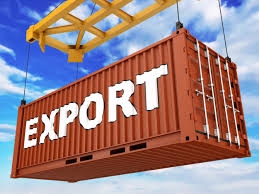New US tax plan seen impacting Vietnam exports
Tuesday, March 14,2017
AsemconnectVietnam - Vietnam’s exports to the United States might be impacted at least in the short term if America implements its border adjustment tax (BAT) as part of President Donald Trump’s plan to revise tax policy, a macroeconomic report said.
The BAT, if implemented, would cause significant disadvantages for countries exporting goods to the US, including Vietnam, said the report, which was prepared and distributed by MarketIntello and the Development and Policies Research centre (DEPOCEN).
The March report was released after Trump’s first address to Congress last week. He once again mentioned his plan to adjust tax policy in order to increase revenues from imports and encourage firms to invest and produce domestically. The BAT is part of this tax adjustment package.
America is Vietnam’s biggest market, the report said. It quoted figures of Vietnam’s general Department of Customs as saying that shipments to America made up nearly 22 percent of Vietnam’s total exports last year, the highest in more than 10 years.
Statistics of the department showed Vietnam’s export revenue amounted to $176.63 billion last year, up 9 percent over 2015, and enjoyed a trade surplus of over $2.52 billion. Vietnam got $38.46 billion from export sales to America, leaping 14.9 percent year-on-year; followed by the European Union (EU) with $33.97 billion.
The report pointed out effects of the BAT on Vietnamese exports would rely on a number of factors. It said given declining domestic demand, Vietnam’s economic growth this year should depend heavily on international trade.
Meanwhile, rising prices of raw materials at the beginning of the year could make inroads into corporate profits as companies are unable to shift the burden of rising prices to domestic consumers if the State Bank of Vietnam (SBV) tightens monetary policy to curb a recurrence of high inflation.
The report said that with a share of about 42 percent, apparel and footwear were the most important goods Vietnam exported stateside, followed by mobile phones and accessories with a share of 11 percent and wooden products with 7 percent.
“These products are inputs for industries that are most affected by a BAT by strongly relying on imports. generally, it will strongly depend on the substitutability of imported and US domestic products as well as how US consumers will react to increasing prices of imported goods,” the report said.
The report noted for Vietnam’s top export earners, products such as garments and electronic products could hardly be substituted by US home products. “As a consequence, it can be expected that importing companies such as retail giant Walmart will pass on increasing prices to consumers and, thereby, rising inflation. Consumer reaction then will determine the change to import demand and, hence, Vietnamese exports in the short-run,” the report said.
To deal with the BAT, exporting countries are expected to use monetary policy to weaken their currencies against the US dollar to maintain the competitiveness of their exports as a counter-measure to the 20 percent border tax.
However, the report said the SBV is unlikely to devalue the dong currency much since it could pile pressure on inflation. “As a consequence, Vietnamese products should lose their competitiveness on international markets. An actual implementation of a BAT, thus, will raise pressure on the SBV to take action to tame inflation and make room for a quicker depreciation of the dong.”
With the appreciating greenback and a possible rate hike made by the US Federal Reserve (Fed), the dong-dollar exchange rate could be revised upwards by VND200, according to the report. In addition, as Vietnam’s economic performance in February was within expectation, it is projected that the country’s economy would expand 6.3 percent with a bigger contribution by the recovering agricultural sector and inflation would grow 4.3-4.5 percent.
Interest rates throughout 2017 could be maintained at their 2016 levels, helped by efforts of the SBV and the government. Nevertheless, given the pressure from US interest rate hikes, the SBV may make dong rate hikes to stabilise the exchange rate.
The dong is projected to fall 1.5-2 percent against the dollar owing to Vietnam’s stable trade balance, positive capital account and higher foreign exchange reserves. However, the report said it is difficult to predict the movement of the dong/dollar exchange rate in 2017 now since it is heavily dependent on US economic policies during Trump’s presidency.
Source: Intellasia.net
Brazil is a market supplying the most corn to Vietnam
Exports are favorable, dragon fruit prices soar
Fertilizer exports and imports in first quarter of 2024
Vietnam - an enticing destination for foreign investors: IMF expert
Banks propose raising small loan cap to 400 million VND
In the first quarter of 2024, pangasius export to UAE market increased by 67%
Pepper export to the Korean market increased nearly 180%
New growth drivers needed for businesses
Demand for prime retail space on the rise in HCM City’s downtown: Savills Vietnam
Majority of credit institutions forecast profit growth in 2024
Fruit and vegetable exports to Korea and Thailand increased dramatically
Import of coal from Russia increased by 146.6% in volume
Core values of national brand should be enhanced
Factors influencing Vietnam’s FMCG market

Plan of Hai Duong province for a period of 2021 - 2030, ...
Organize space reasonably and harmoniously, focusing on connecting Hai Duong in common development space, actively contributing to the ...Plan of Hau Giang province in a period of 2021 - 2030, ...
Sustainable forestry development program in a period of ...

12th-century ancient road unearthed at My Son Sanctuary
An ancient road dating back to the 12th century has freshly been discovered in an excavation on architectural ruins at the east side of ...Efforts made to seek UNESCO’s recognition for Con Moong ...
Vietnam Art Photo Contest and Exhibition 2024 to be held ...
Bas-relief featuring talks between Uncle Ho and soldiers ...



